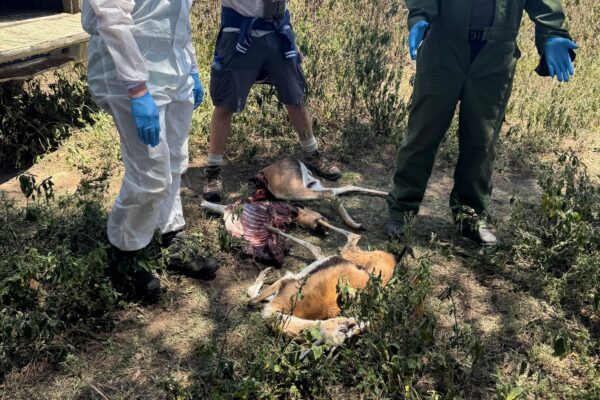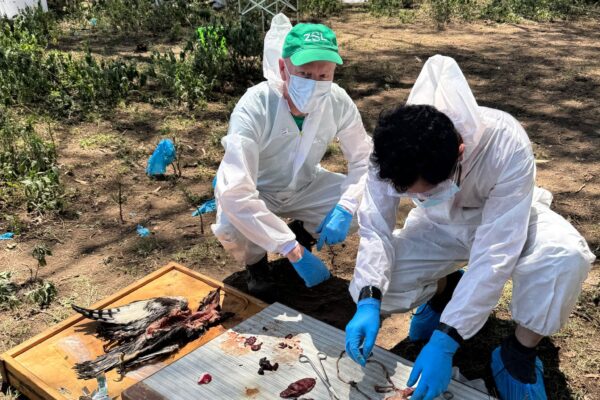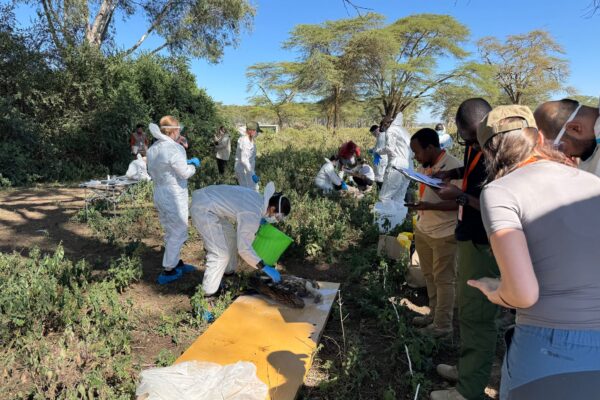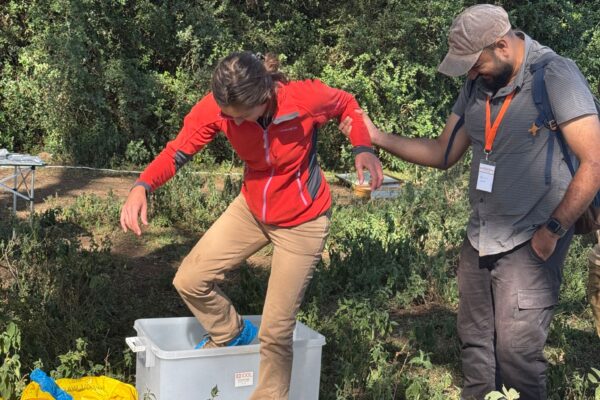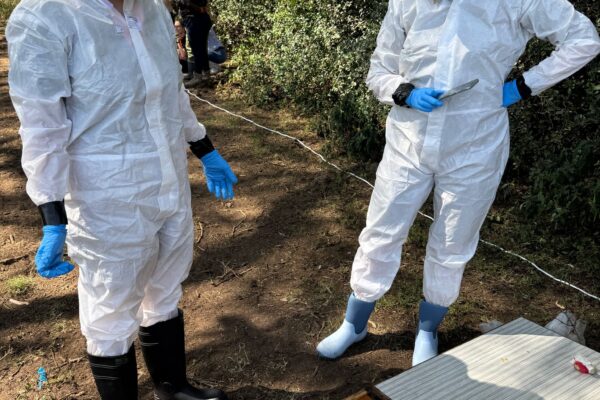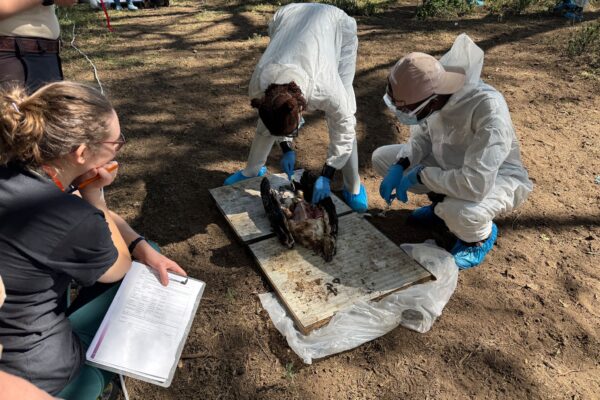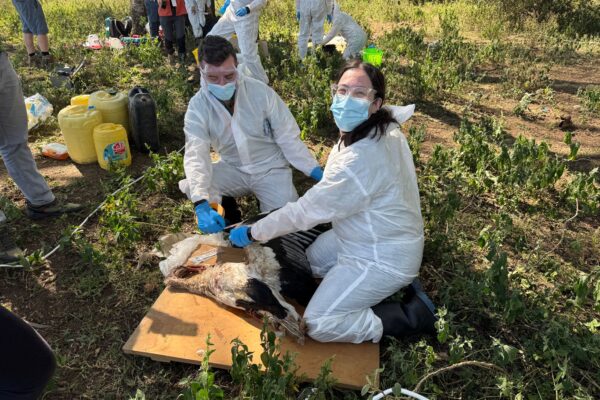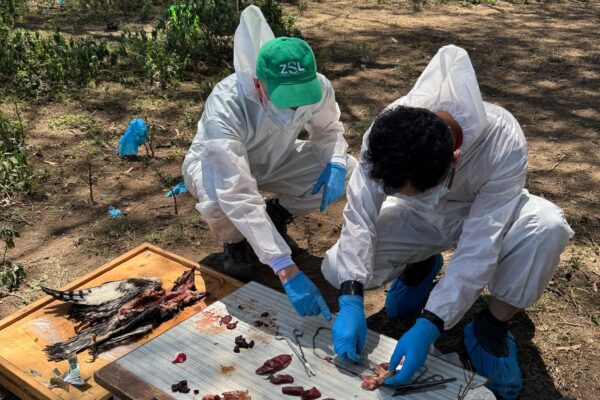
23rd February
by Drs Gareth Richardson and Debabrata Phukon
Today after breakfast we assembled in the lecture hall to be briefed on our postmortem pathology examinations. We were split into 4 groups and driven to the WRTI annex for the investigations. Group 1 helped to set up a controlled dirty area for the pathological examination to take place in. There were many signs of hippo activity such as a sleeping area and middens. The rangers took up position around the site in order to secure it.
Each group was allocated a bird for the pathological examination and were given the case histories. There was an endangered Rupell’s Vulture, a Crested Eagle, an immature African Fish Eagle and a European White Stork. Our group was allocated the Crested Eagle.
We then had to take it in turns to don PPE, consisting of Welly Boots (or very fragile shoe covers), a hazmat disposable coverall, goggles, masks and double gloves, taped at the cuff. The dirty area was entered via an iodine footbath, with Alexandra developing and demonstrating a very agile and nimble method which involved very precise balancing skills.
– Gareth
The 5th day of our field course in WRTI, Naivasha, had a mix of both classroom sessions and field sessions. The day started off with the participants performing post-mortem examinations of wild birds, recording the observations and collecting relevant biological samples using proper PM kits and coveralls. This was followed by interpretations of the post-mortem observations in the classroom, allowing the participants to get new insights into the field of wildlife necropsy. In the later half of the day, a session was conducted on analysing disease outbreak data collected from the previous day through simulation of a similar event in the field using GIS application. The participants got a first-hand experience of mapping disease outbreak and analysing the data for interpretation.
– Debabrata

